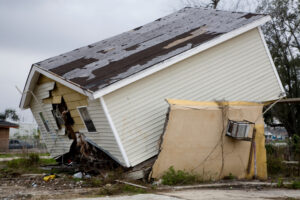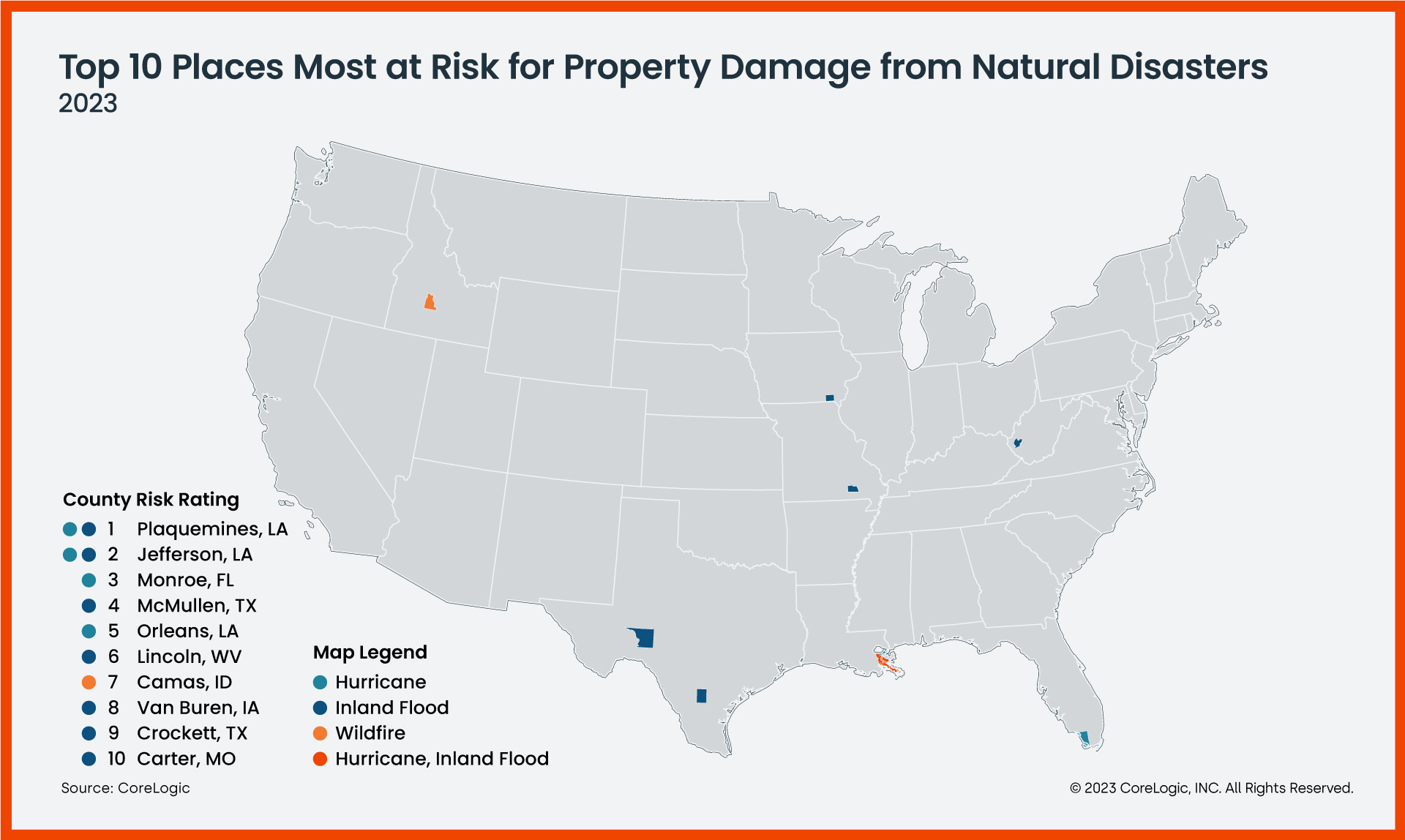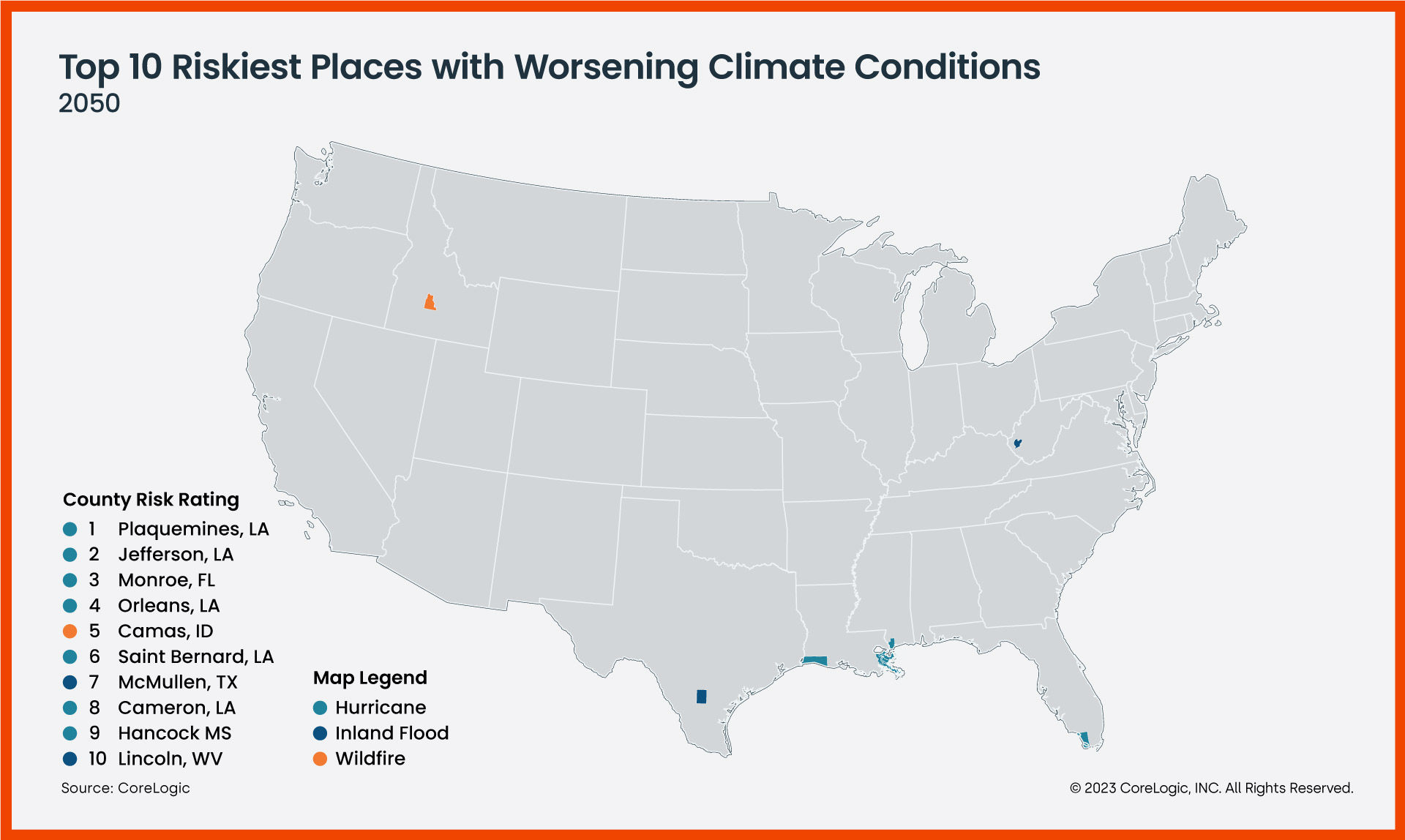 CoreLogic has announced the results of its riskiest places to live for natural disasters study. With exposure to hurricanes and inland floods Plaquemines Parish, Louisiana, emerged as the riskiest place for property owners due to damages from natural disasters. Areas on or near the U.S. Gulf Coast are particularly vulnerable to potential catastrophe damages, both currently and in the future.
CoreLogic has announced the results of its riskiest places to live for natural disasters study. With exposure to hurricanes and inland floods Plaquemines Parish, Louisiana, emerged as the riskiest place for property owners due to damages from natural disasters. Areas on or near the U.S. Gulf Coast are particularly vulnerable to potential catastrophe damages, both currently and in the future.
CoreLogic’s Climate Risk Analytics: Composite Risk Score (CRA Composite Risk Score) identifies U.S. areas that are currently at risk and stress-tests natural disaster risks over the next 30 years across various future climate scenarios. These scenarios include a base where conditions do not change; a progressively worsening climate is noted as “Scenario 8.5,” RCP (Representative Concentration Pathways) and is an example of what could happen in the future. The RCP 8.5 projections in this report include climate-related risks to residential properties, assuming that carbon-dioxide emissions continue to rise throughout the 21st Century.
For the report, CoreLogic analyzed the impact that environmental risks had on 154 million properties across the U.S., and was built on the company’s data that details the physical characteristics of those homes, including construction year, first-floor height, number of stories and square footage.

CoreLogic analyzes natural perils and applies the company’s analytics to its extensive property data to provide deep insights into natural hazards, climate risks and the resulting impacts on the property landscape. As a result, the top 10 places most at risk for property damage from natural disasters in 2023 are:
- Plaquemines, Louisiana (Primary Risks: Hurricane, Inland Flood)
- Jefferson, Louisiana (Primary Risks: Hurricane, Inland Flood)
- Monroe, Florida (Primary Risk: Hurricane)
- McMullen, Texas (Primary Risk: Inland Flood)
- Orleans, Louisiana (Primary Risk: Hurricane)
- Lincoln, West Virginia (Primary Risk: Inland Flood)
- Camas, Idaho (Primary Risk: Wildfire)
- Van Buren, Iowa (Primary Risk: Inland Flood)
- Crockett, Texas (Primary Risk: Inland Flood)
- Carter, Missouri (Primary Risk: Inland Flood)

In examining progressively worsening climate conditions, the riskiest places analyzed by CoreLogic in 2050 do not change drastically:
- Plaquemines, Louisiana (Primary Risk: Hurricane)
- Jefferson, Louisiana (Primary Risk: Hurricane)
- Monroe, Florida (Primary Risk: Hurricane)
- Orleans, Louisiana (Primary Risk: Hurricane)
- Camas, Idaho (Primary Risk: Wildfire)
- Saint Bernard, Louisiana (Primary Risk: Hurricane)
- McMullen, Texas (Primary Risk: Inland Flood)
- Cameron, Louisiana (Primary Risk: Hurricane)
- Hancock, Mississippi (Primary Risk: Hurricane)
- Lincoln, West Virginia (Primary Risk: Inland Flood)
Click here for more on CoreLogic's safest place to live for natural disasters.

 DSNews The homepage of the servicing industry
DSNews The homepage of the servicing industry









